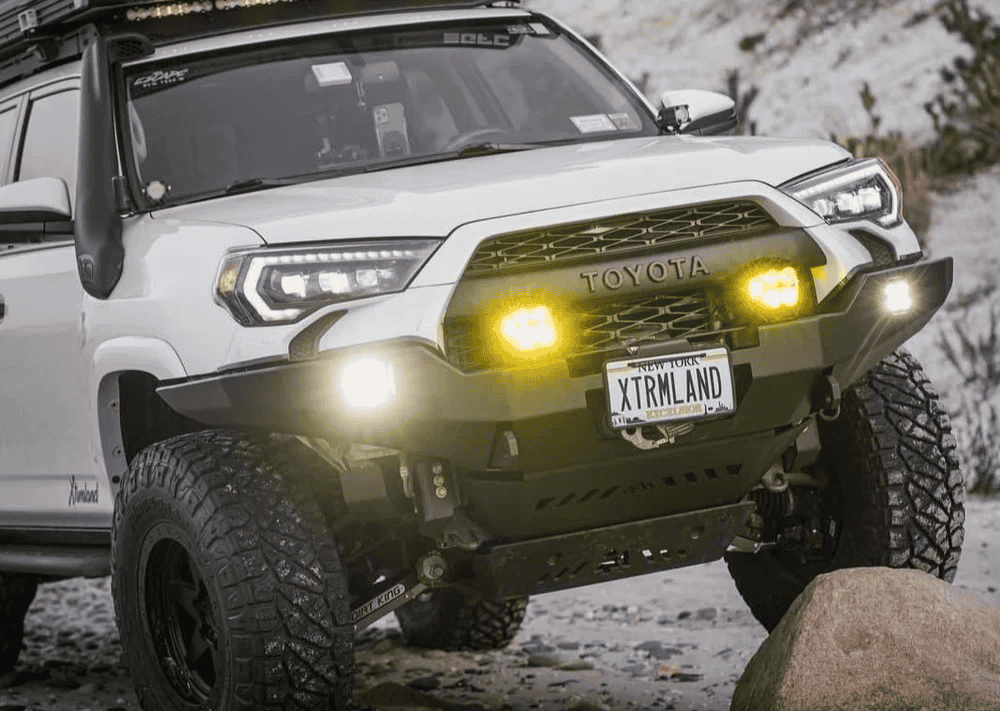Overland Vehicles

Low profile roof design aims to keep height, edges, and add ons as sleek as possible without compromising function. The payoff begins with drag reduction. The roof is a dominant contributor to frontal area and flow separation, so shorter stack height and softened edges help air stay attached longer, trimming the wake and the fuel penalty that comes with it. A shorter silhouette also lowers the center of gravity, improving stability during evasive maneuvers and on off camber tracks.
Noise follows the air. Tall racks, exposed brackets, and sharp leading edges generate vortices that ring through the cabin. Streamlined housings, rounded front bars, and flush mounted panels calm turbulence, reducing the hiss and boom that build with speed. Clearance is the third pillar. Keeping the profile compact helps with parking garages, drive throughs, low branches, and cargo door clearances, which matters for daily usability as much as for backcountry routes.
A practical design balances height and function. You still need airflow for condensers, access for maintenance, tie down points for cargo, and room for wiring runs. A well integrated roof uses compact components, shares mounting rails, and hides hardware behind smooth covers so the exterior stays tidy while serviceability remains intact.
The front third of the roof does most of the aerodynamic work. A generous leading radius, or a fairing that mimics one, guides air up and over with fewer separation points. Smooth transitions between body, rack, and accessories matter more than absolute thinness. Even millimeter step downs can trip the boundary layer at highway speeds.
Wind noise rests on the same physics. Cylindrical crossbars can shed alternating vortices, creating a tonal whistle. Switching to aerofoil sections, staggering edges, and breaking up uniform gaps reduces tonal peaks. Closing open cavities with end caps and undertrays prevents organ pipe effects that amplify sound in the cabin.
Water prefers the path you design. Drip paths, shallow gutters, and subtle crown in the roof plane move water away from seams and penetrations. A low profile approach does not mean flat at all costs. A slight rise at the centerline and controlled runout to edges helps avoid ponding around solar frames and fan shrouds.
Low mass supports improve handling. Aluminum extrusions and thin wall steel with internal gussets distribute loads while keeping the section slender. Composites with foam or honeycomb cores can deliver stiffness at very low thickness, ideal for fairings and covers. Regardless of material, load spreads are essential. Use large footprint plates or bonded inserts so point loads from gear do not dent roof skins or create stress risers.
Every accessory adds height, edges, and airflow disturbances. The goal is to align them with the airstream and each other. Good practices include:
Simple tests go a long way. Tuft testing along the roof and rack shows where flow separates. A smartphone microphone and frequency analysis can reveal tonal peaks tied to bar shapes and gap sizes. On road coast down comparisons, ideally done on the same day and route, can quantify drag differences from fairings or panel height changes. When available, CFD helps iterate fairing radii and rack rail geometry, but track side observations often surface the biggest wins.
Low profile does not mean hard to service. Access windows, removable covers, and shared fastener sizes keep field repairs quick. Modular rails let you reposition accessories without new holes. Electrical runs should sit in protected channels with drip loops and service slack, then sealed with grommets and quality sealant rated for UV and temperature swings.
Safety demands compliance with roof crush and rollover standards. Mounting systems should respect curtain airbag paths and avoid impeding factory crumple behavior. Even a slim rack needs a clear load rating for dynamic and static conditions, and that rating should consider off road shock loads and recovery scenarios. Tie downs must anchor to structure, not just skin, and edges should be radiused to protect straps and cables.
A well executed low profile roof design feels invisible in daily life. You notice the calmer cabin, the extra inch that clears the garage, and the way the van tracks steady when crosswinds pick up. On the trail, a shorter roofline dodges branches and keeps weight where it belongs, close to the chassis. In storms, water sheets where you planned, not into seams you forgot.
If you want that quiet, efficient silhouette without the guesswork, a specialized builder makes the difference. OZK Customs integrates slim racks, flush solar, fairings, and sealed penetrations as part of full vehicle builds or targeted upfits, then validates the setup with real road testing around Northwest Arkansas. Explore our approach to capable rigs on the overland rigs page, see focused upgrade paths with custom overland upfit, and learn what sets our process apart at why choose OZK Customs.
Tell us how you travel, where you park, and what you carry. We will engineer a low profile roof design that keeps your van quiet, efficient, and ready for the miles ahead.
Ready to turn a quiet, efficient roofline into real-world performance? Share your goals and let OZK Customs shape a low-profile solution that fits your routes, your gear, and your timeline. Start your build conversation today.
ADDRESS:
6159 E Huntsville Rd, Fayetteville, AR 72701
PHONE:
(479) 326-9200
EMAIL:
info@ozkvans.com